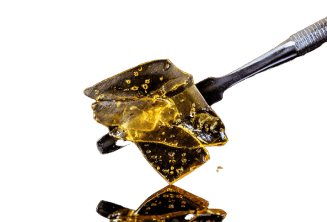Sonophoresis is a non-invasive, drug delivery method of absorbing a drug’s topical compounds into the skin, and respectively into the body. This is a process which makes it possible for cannabis-infused oil to enter the body and do its magic. Sonophoresis is considered to be the most efficient when it occurs with low-frequency. Since ultrasound and the cavitation it causes are the catalysts of sonophoresis, scientists have pondered what is the ultimate type of cavitation to go with this ultimate type of sonophoresis.
Cavitation
The alternating between high and low-pressure waves, emitted by an ultrasound probe, creates microbubbles which expand during the low-pressure phases and implode with tremendous force during the high-pressure phases. The implosion disperses shock waves and currents in the respective medium which can break down cell walls. This is what cavitation is, the foundation of ultrasonic cannabis extraction. (1)
Types of Cavitation
There are two types of cavitation: stable (non-inertial) and transient (inertial). (2) The stable one is defined by the bubbles oscillating for a number of cycles before collapsing while the transient means bubbles grow rapidly and collapse much faster.
Cavitation During Low-Frequency Sonophoresis
Low-frequency sonophoresis occurs at a frequency of 20kHz ultrasound or below. Through experiments, scientists have determined that cavitation is pivotal to the low-frequency sonophoresis and the mechanisms it operates on. (2) More specifically, it’s the transient cavitation that occurs on or nearby the skin membrane. Outside of it, that’s the main drive of low-frequency sonophoresis, ultimately making the skin a friendlier host to a substance’s compounds that are trying to enter the body.
Topical Application of Cannabis
While cannabis absorption through inhalation or eating affects the whole body, topical application of cannabis in the form of oils, lotions, creams, and balms affects only the targeted area. (3) Since topicals are CBD-based, their properties are entirely medical rather than intoxicating, making them a safer option for unexperienced consumers.
Low-frequency Sonophoresis of Cannabinoids
The problem with topical absorption of cannabinoids is that the skin is not very permeable to them (4). In order for enough cannabinoids to reach their target area and achieve the desired effect, one needs to apply the topical of choice “liberally”, as suggested by the labels, which is clearly not very efficient.
Similar to soil that needs to go through certain processes before the sowing phase begins, employing low-frequency sonophoresis to make the skin more permeable to cannabinoids will enable cannabis topicals to do much more with much less. And it all starts with transient cavitationtreatments on or nearby the skin.
References:
- https://www.sonics.com/liquid-processing/about/blog/posts/understanding-ultrasonic-cannabis-extraction/
- https://link.springer.com/article/10.1023/A:1019898109793
- https://news.medicalmarijuanainc.com/why-use-a-cannabis-topical/
- https://echoconnection.org/cbd-absorbed-body/











